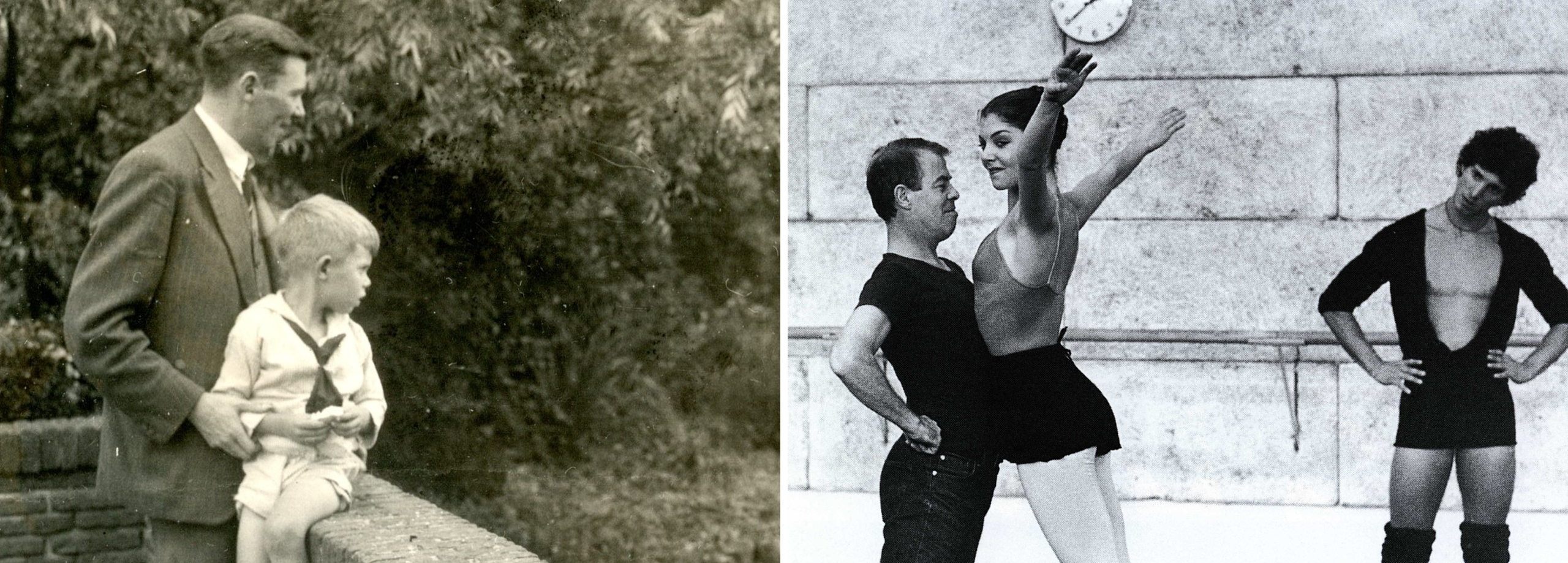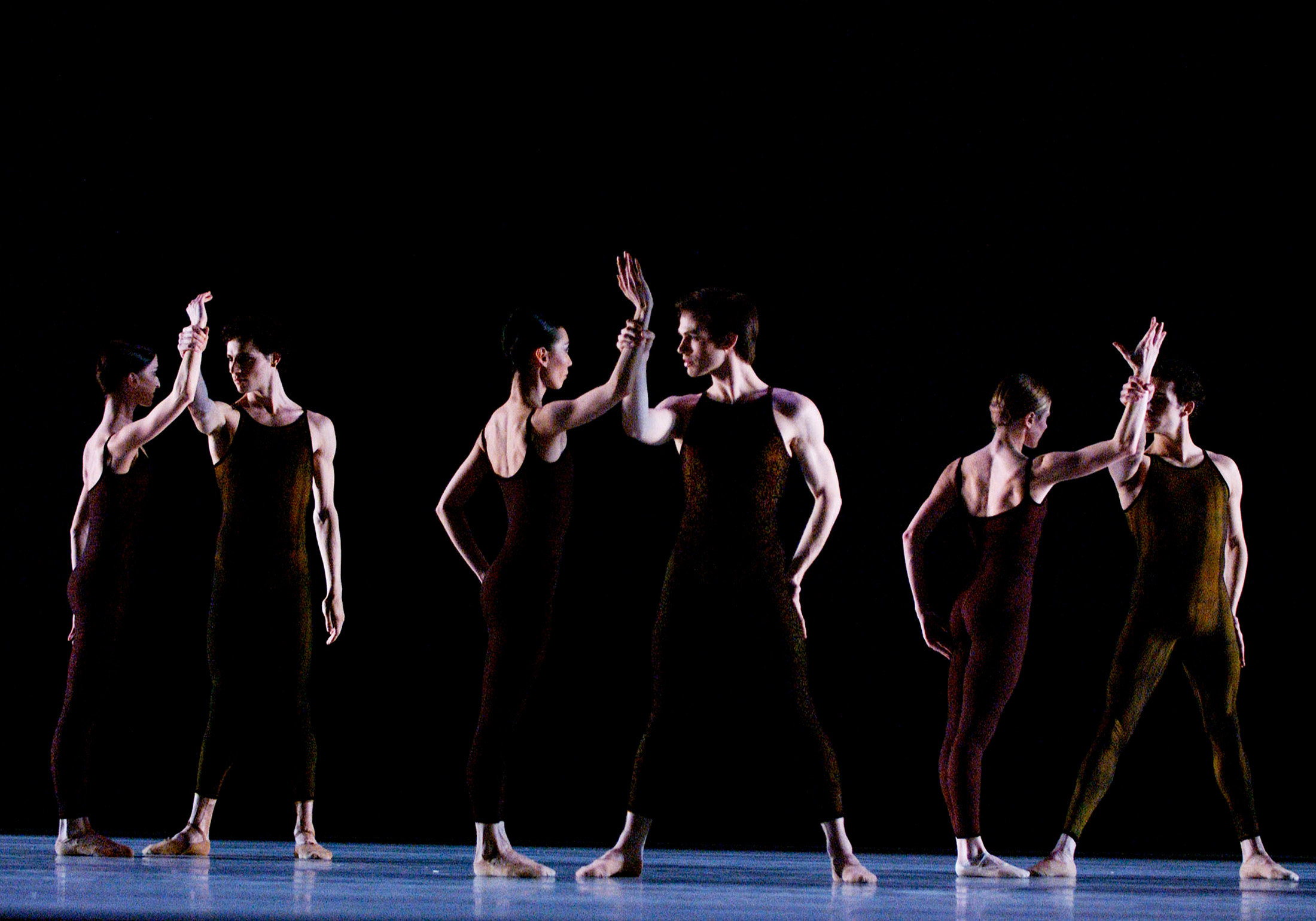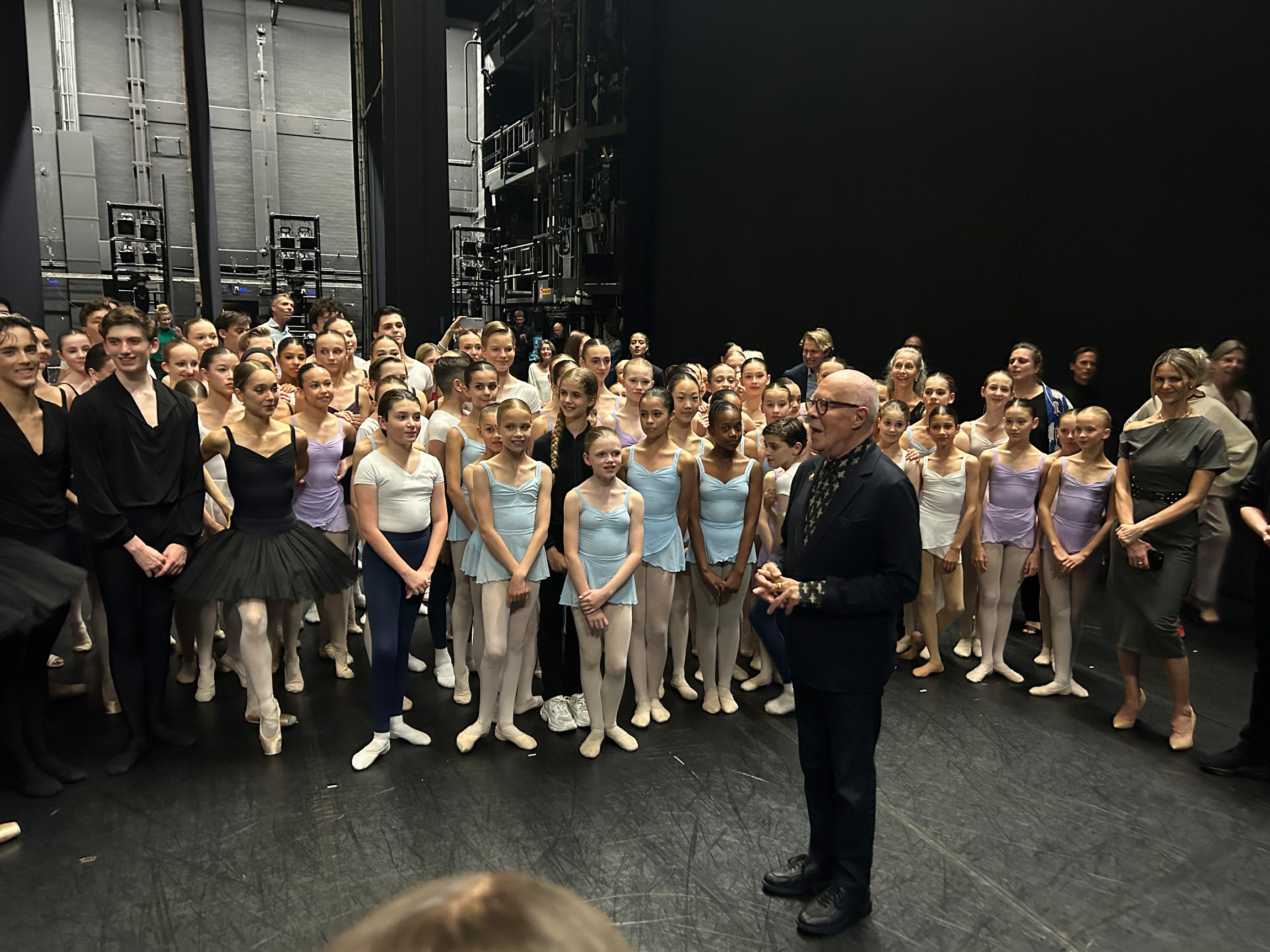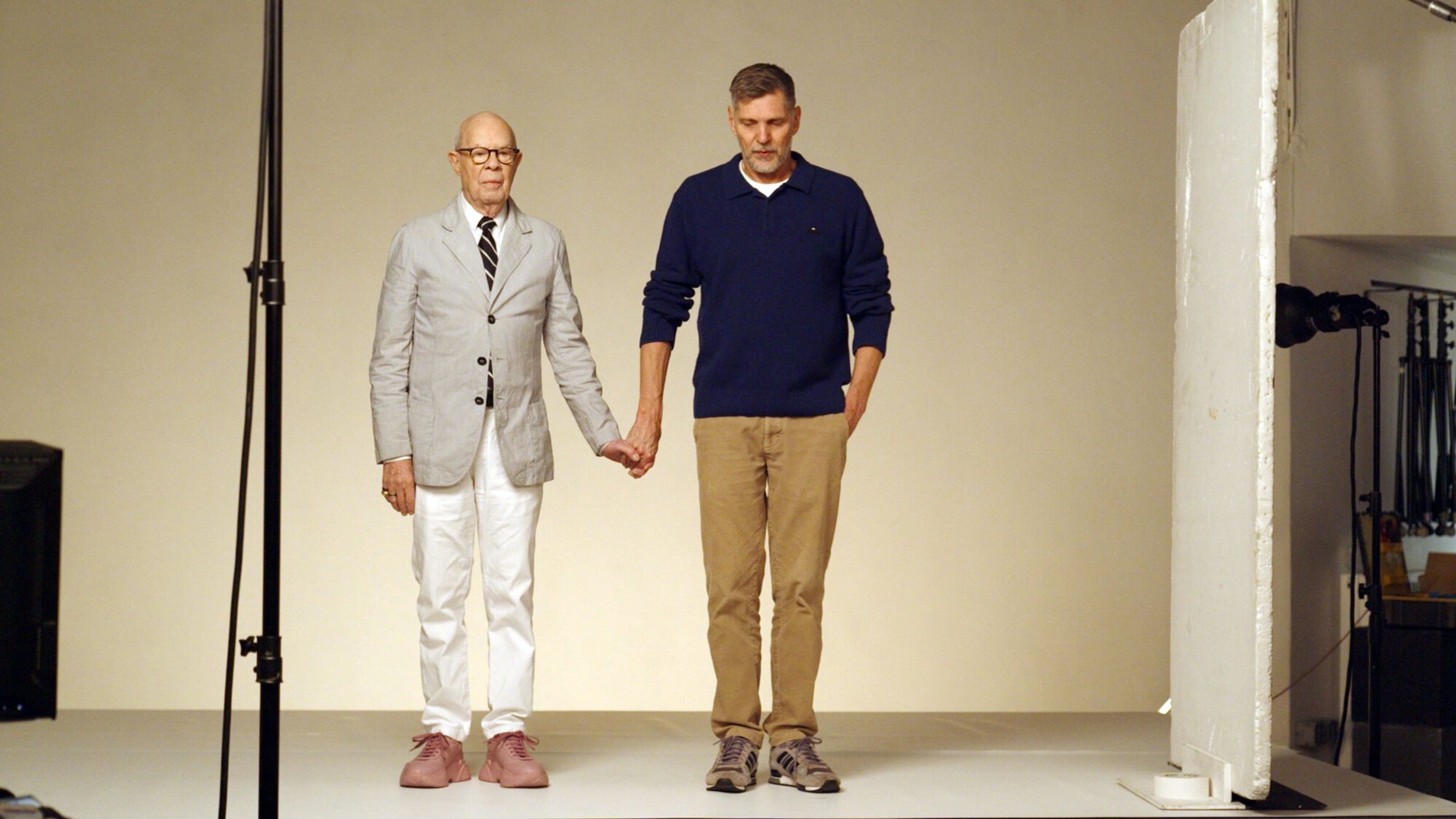
Hans van Manen timeline
Hans van Manen has created over 150 choreographies, including his television ballets. His work is performed by more than 100 dance companies worldwide. This timeline provides an overview of his life and his most significant works. For a complete list of all his choreographies, click here.

1990-1999
1990

One masterpiece after another
For Van Manen, the nineties are exceptionally productive years. For Nederlands Dans Theater, he creates one masterpiece after another. The first is Visions Fugitives, with a starring role for two important new Van Manen muses: the beautiful, extremely feminine Fiona Lummis and the impressive, sensual Jean Emile.
1991

Awards for ‘ballets for two’
Among the many masterpieces Van Manen creates for Nederlands Dans Theater in this decade are several more ‘ballets for two’. He uses this name deliberately, as he says, “I’ve never made a pas de deux in my life. In a pas de deux, dancers mainly dance their own variations, whereas in a ‘ballet for two’ they have a relationship.” In 1991, Van Manen receives the Sonia Gaskell award from the Amsterdam Fund for the Arts for three of these ‘ballets for two’: Two (1990), Theme (1991) and Andante (1991). For Two, he is also awarded his second Choreography Prize from the Dutch Association of Theatre and Concert Hall Directors (VSCD), in the same year.
1992

Officer in the Order of Orange-Nassau
On the occasion of his 35th anniversary as a choreographer, in 1992, Van Manen is promoted from Knight in the Order of Orange-Nassau to Officer in the same order.
1993

‘Saying twenty millions things with one simple movement’
Van Manen first used music by Johann Sebastian Bach as early as 1972 (for Opus Lemaître), and he continues to do so regularly throughout his career. One of his most beautiful and most successful Bach ballets is undoubtedly Fantasía, created in 1993 for six leading dancers from Nederlands Dans Theater: Fiona Lummis, Sol León, Cora Kroese, Jean Emile, Paul Lightfoot and Jorma Elo. The title is deliberately written with an accent over the ‘i’, says Van Manen, “in order to avoid any confusion with Disney’s Fantasia.” According to Jean Emile, the ballet is about ‘dreaming and saying farewell to dreams’. “It’s about saying goodbye to something you actually don’t want to say goodbye to. But”, he stresses, “Hans never lays it on too thick. He can say twenty million things with just one simple movement.”
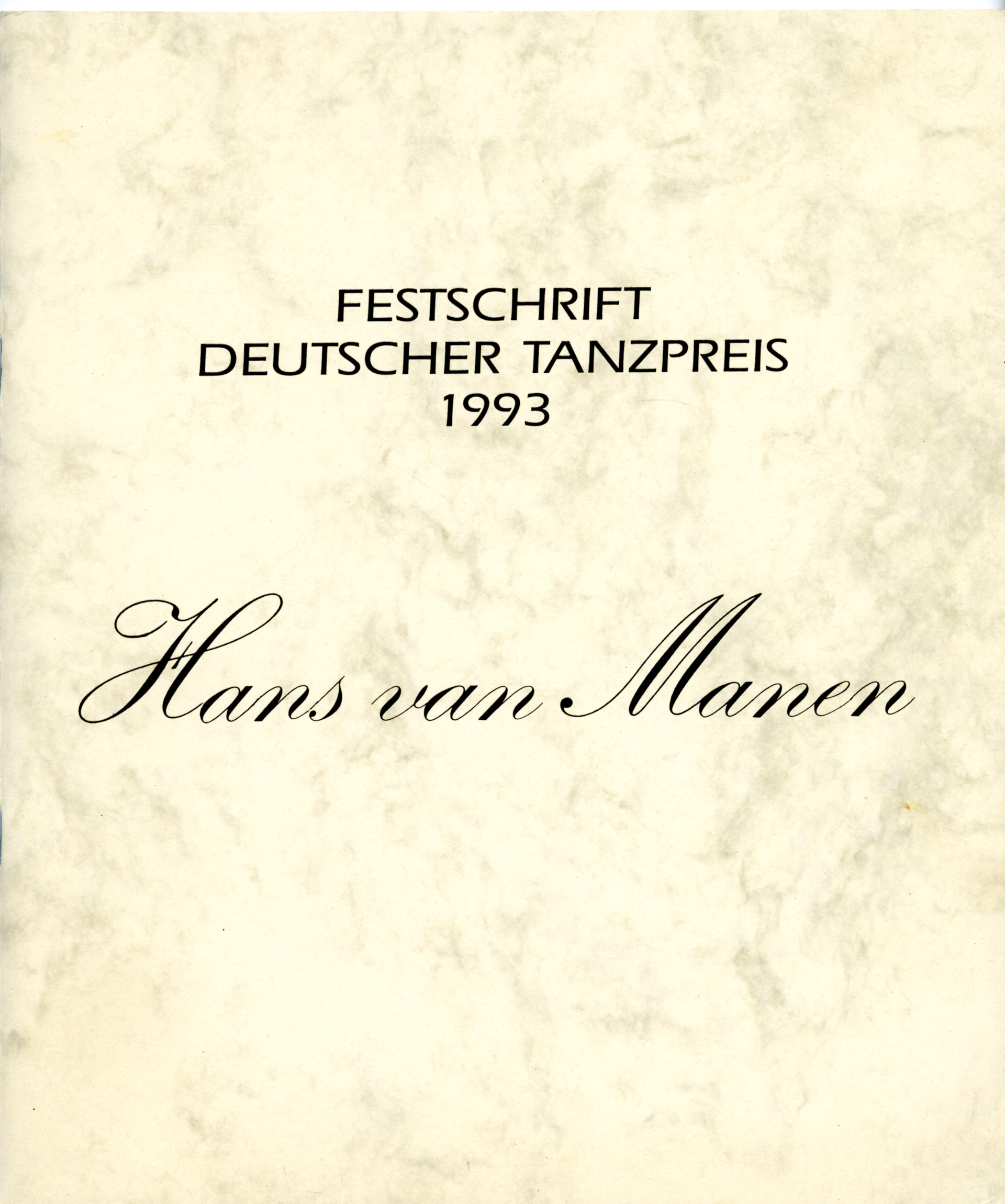
Deutscher Tanzpreis
For his great influence on the dance world in Germany in the preceding twenty years, Van Manen receives the prestigious Deutscher Tanzpreis in 1993.
1994

Mondrian of dance (or not)
For the fiftieth anniversary of the death of the painter Piet Mondrian, in 1994, Van Manen creates Compositie, for Nederlands Dans Theater’s Holland Festival programme. In an austere white, grey and black set, with two square tables and four plain cubic stools by each table, eight dancers play an intriguing game of attraction and rejection in beautifully mirrored patterns. The leading German dance critic Jochen Schmidt once labelled Van Manen as ‘ein Mondrian der Balletbühne’, following which the name ‘Mondrian of dance’ becomes widely used in the Netherlands as well.
1995

Déjà vu
However many masterpieces Van Manen creates in his second period with Nederlands Dans Theater and however much praise he receives for them, in the mid-nineties there are also critics who think he is repeating himself too much. One of them even uses the expression ‘déjà vu’, and this criticism does not fall on deaf ears. In 1995, Van Manen hits back ruthlessly with a sublime, virtuoso duet for NDT 2, which he calls Déjà vu and in which he brilliantly reveals various aspects of a long-term relationship. Or in his own words, “Déjà vu is about two people who are in constant opposition. They really have a go at each other.”

Kammerballett, ending in ‘the most beautiful solo ever’
After Déjà vu, Van Manen surpasses himself – if possible – with Kammerballett, created for eight dancers from NDT 1, with a starring role for the female dancer Sol León, who alongside Fiona Lummis has now become Van Manen’s new muse. In the Dutch newspaper Algemeen Dagblad, dance critic Astrid van Leeuwen writes, “Like a toreador, the Spaniard Sol León captivates attention in the final section of Kammerballett (..) What Van Manen shows here demonstrates such simplicity, yet is so moving at the same time that you wonder whether the man will ever be able to match this beauty again.”
1996

The Old Man and Me
Between 1991 and 2006, Nederlands Dans Theater not only has a main company and a company for young dancers (NDT 1 and 2), but also a company for dancers aged forty and up: NDT 3, an initiative by Jiří Kylián. Van Manen makes several works for the ‘senior ensemble’, the absolute highlight of which is The Old Man and Me, created at the beginning of 1996 for the dancers Sabine Kupferberg and Gérard Lemaître. “Anyone who’s ever been in love is touched by this duet”, said Lemaître about the ballet, in which Van Manen paints a complete picture of a relationship – if not of life itself – in less than twenty minutes. After the swaggering and seduction of the first sections, in the final section the dancers ‘freeze’ in photo poses, like a nostalgic memory of all the good things that have happened.
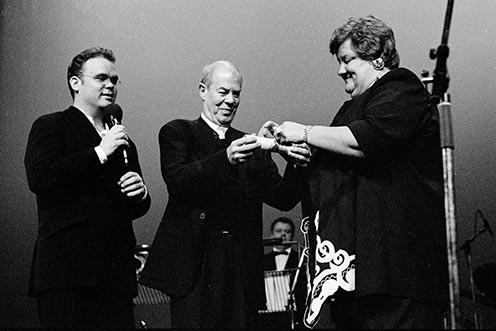
Bob Angelo Medal for the fiftieth anniversary of COC
In December 1996, Van Manen receives the Bob Angelo Medal from the COC (the Dutch LGBTI organisation) “for the way in which he has given shape in his ballets and photography to images of men and women, human relationships and sexuality, which can be viewed in many respects as liberating and taboo-breaking, and which ‘play’ with gender roles”.
1997

‘Hans didn’t use Bach, he actually felt Bach’
In January 1997, Van Manen creates “six delightful minutes, which you experience breathlessly from the first to the last second”, as the Dutch newspaper Algemeen Dagblad writes. He choreographs Solo for three dancers from NDT 2 because, as he explains at the time, the punishing tempo of Bach’s Violin Partita No. 1 means it can’t be danced by just one person. “It was one of the most exciting creative processes ever”, is how the original cast remembers the creation of this ‘solo for three’.

The 'dikke Van Manen'
In April 1997, Arena publishes Hans van Manen – Leven en werk (Life and work), the first extensive biography of Van Manen, written by dance historian and critic Eva van Schaik. The book is an impressive tome; a reference book containing a wealth of information and quotes worth reading, about Van Manen as a person, about his ballets and about practically the whole world around him. However, Van Schaik also ventures to ‘psychologise’ his ballets to a great extent. Van Manen is averse to this and therefore refuses to authorise the book. The size of the biography soon leads to the press calling it the ‘dikke Van Manen’, in reference to the comprehensive Dutch dictionary, the ‘dikke’ (fat) Van Dale.
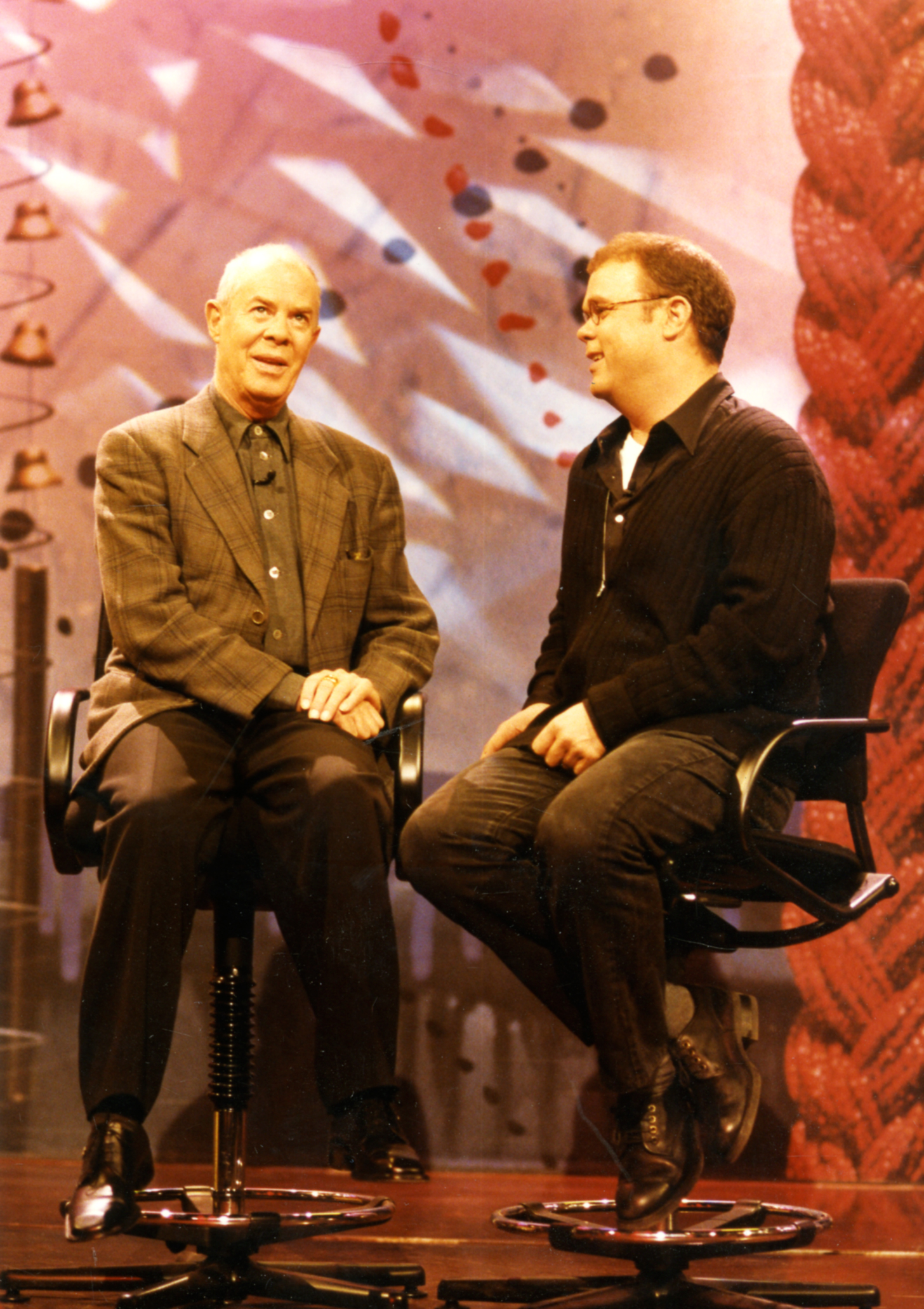
‘Her Hans’ aged 65
On 11 June 1997, precisely one month before the festive day, Nederlands Dans Theater celebrates Van Manen’s 65th birthday in a programme that includes not just NDT 1, 2 and 3, but also dancers from Dutch National Ballet, ex-dancers and non-dancer friends. The evening is presented by cabaret performer Paul de Leeuw, who says – with a big wink – that he is pretty nervous, as he has to address two queens tonight. He welcomes Van Manen, Queen Beatrix and their spouses with the words, “Her Hans, Majesty, Royal Highness and His Henk”, and goes on to say that the two queens have a lot in common.

Comeback to Dutch National Ballet
For the first time since leaving the company in 1987, Van Manen makes a new piece for Dutch National Ballet, which has been led by the Canadian artistic director Wayne Eagling since 1991. In Three Pieces for HET, dedicated to his former muse Rachel Beaujean, Van Manen explores the principle of the anticlimax. He deliberately chooses to begin with a group of dancers and then follows with two duets. The first is swirling and nervously energetic, and the second is a tranquil adagio that gradually decreases in movement density. Rather than ‘starting in first gear and gradually revving up the engine’, he has the two dancers ‘change down from fifth to second gear’, as it were.
1998
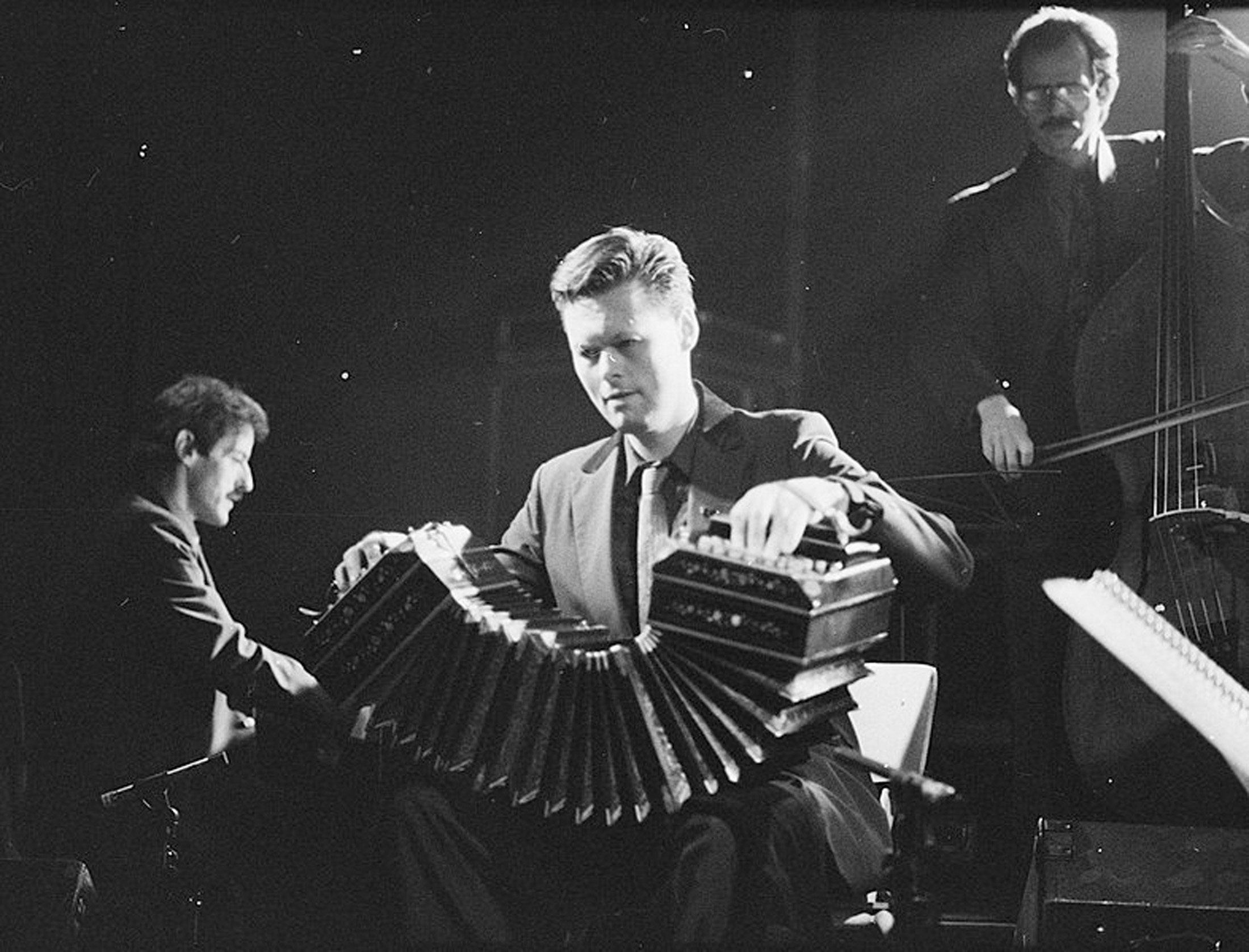
5 Tangos with live accompaniment from Sexteto Canyenque
In February 1998, Dutch National Ballet presents a complete Van Manen programme again for the first time in over ten years, comprising his successful ballets Metaforen, 5 Tangos and Trois gnossiennes, and his most recent creation for the company Three Pieces for HET. 5 Tangos has live accompaniment for the first time, from Sexteto Canyengue, the tango sextet of Carel Kraayenhof.

Awarded the Scottish Archangel
In August 1998, the renowned Edinburgh Festival honours Van Manen with an extensive retrospective. Dutch National Ballet presents two programmes devoted to his work, and Nederlands Dans Theater is also a guest, presenting, among other works, the world premiere of Van Manen’s Zero Hour, his second creation to (four) tango compositions by Astor Piazzolla. At the festival, Van Manen receives the Archangel, the Edinburgh Festival Critics' Award, for his whole oeuvre.
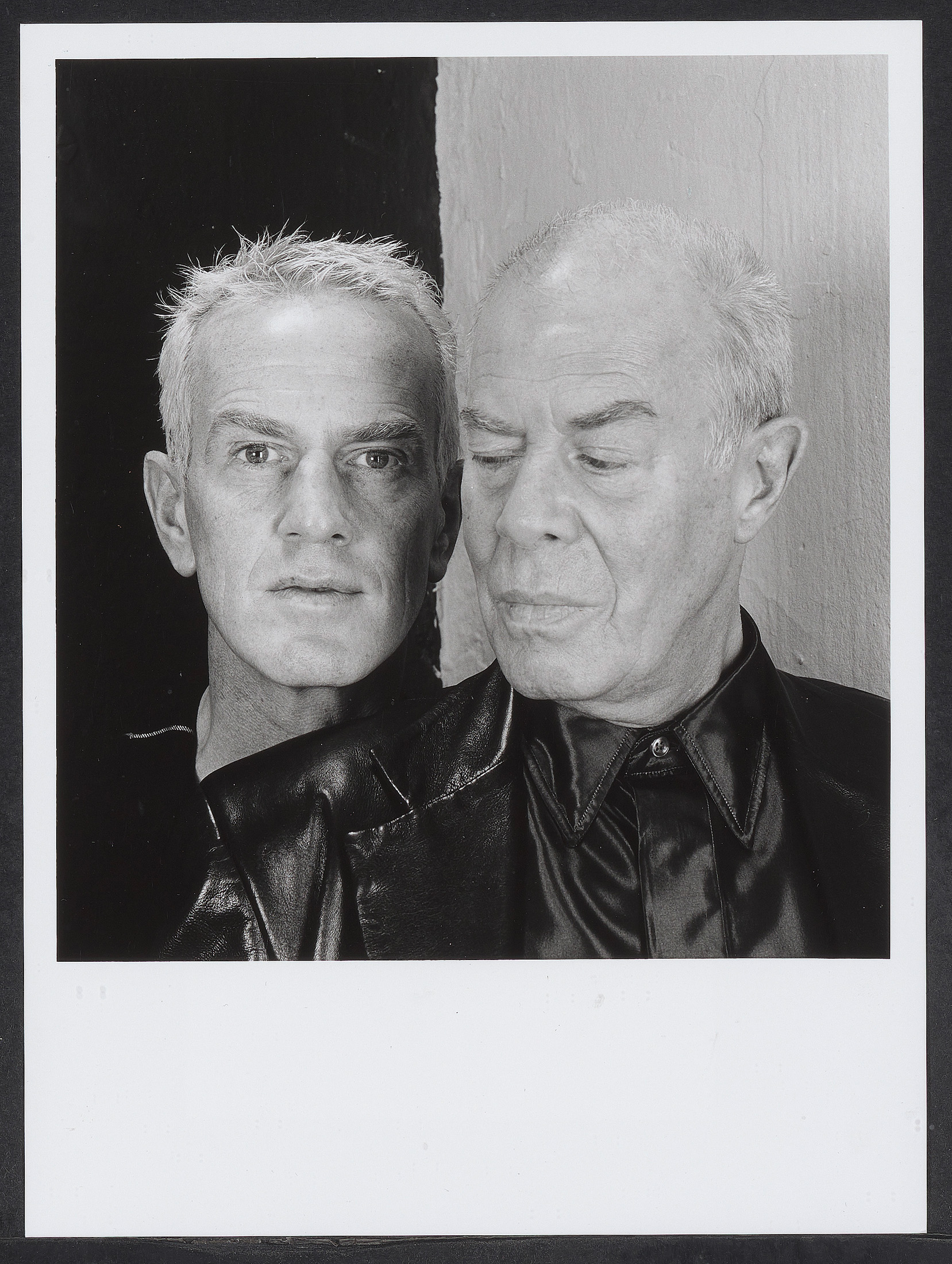
Registered partnership
In 1998, after a relationship of over 25 years, Van Manen and Henk van Dijk say ‘I do’ to one another. Although they cannot marry yet, as same-sex marriage is only recognised in 2001, they enter into a registered partnership, and from now on are spouses, in effect.

